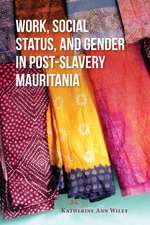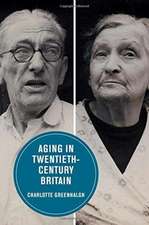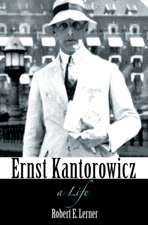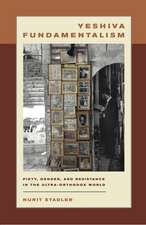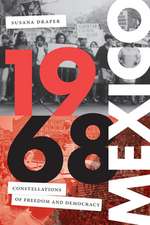Advanced Sports Nutrition
Autor Dan Benardoten Limba Engleză Paperback – 29 iul 2020
Preț: 255.02 lei
Nou
Puncte Express: 383
Preț estimativ în valută:
48.80€ • 51.09$ • 40.38£
48.80€ • 51.09$ • 40.38£
Carte disponibilă
Livrare economică 15-29 martie
Livrare express 04-08 martie pentru 56.81 lei
Preluare comenzi: 021 569.72.76
Specificații
ISBN-13: 9781492593096
ISBN-10: 1492593095
Pagini: 528
Dimensiuni: 188 x 252 x 31 mm
Greutate: 1.07 kg
Ediția:Third Edition
Editura: MG – Human Kinetics
ISBN-10: 1492593095
Pagini: 528
Dimensiuni: 188 x 252 x 31 mm
Greutate: 1.07 kg
Ediția:Third Edition
Editura: MG – Human Kinetics
Cuprins
Part I. Nutrition Sources for Athletes
Chapter 1. Energy Nutrients
Energy nutrients (carbohydrate, protein, and fat) are fuel sources for athletes, but they also have other functions, including muscle recovery and tissue repair. These substrates are metabolized differently depending on exercise intensity, substrate availability, and conditioned state. This chapter clarifies what substrates should be emphasized before, during, and after exercise.
Chapter 2. Vitamins and Minerals
Physical activity alters the requirements for vitamins and minerals, with the type of activity performed in different environmental conditions having a different effect on utilization and need. This chapter demonstrates how the sporting discipline, age, and gender influence the risk of vitamin or mineral deficiency, and it recommends the best ways of ensuring that cellular needs are satisfied.
Chapter 3. Fluids and Electrolytes
Fluid and electrolyte balance is critically important for sustaining athletic performance, but it is difficult to accomplish without a hydration plan that is tailored to the athlete and the environmental conditions. This chapter provides information on how to create appropriate hydration strategies and how to help the body adapt to consumption of the right amounts of fluid.
Chapter 4. Ergogenic Aids
Nutritional ergogenic aids are substances that can improve athletic performance if properly consumed. However, there are many ergogenic aids available to athletes that fail to perform as advertised, and they may have a negative impact on performance. This chapter highlights the nutritional ergogenic aids that may benefit athletes in specific sports and those that should be avoided because of potential problems.
Part II. Nutrition for Optimal Performance
Chapter 5. Athlete GI Function and Energy Delivery
Everything an athlete eats and drinks passes through the gastrointestinal (GI) tract, which is responsible for digesting foods so that vitamins, minerals, and energy substrates can be absorbed into the blood for delivery to tissues. This chapter focuses on how consuming the right foods and beverages at the right times and in the right amounts can help athletes optimize GI function and minimize the risk of GI distress.
Chapter 6. Nutrient and Fluid Timing
Nutrition recommendations have traditionally emphasized the foods and beverages that will meet daily nutritional needs. There is an increasing body of evidence highlighting the importance of eating and drinking those foods and beverages in the right amounts and at the right times. This chapter provides information on how the timing of consumption can influence athletic performance.
Part III. Factors Affecting Nutrition Needs
Chapter 7. Travel
Travel is a common aspect of the life of athletes, who often cross multiple time zones and travel to locations with different cultures and unfamiliar foods. This chapter provides information on the common nutritional problems that travel creates, with solutions for how to reduce travel-associated risks so that athletes can perform at their conditioned capacity.
Chapter 8. High Altitude
The lower oxygen level at high altitude has a negative impact on athletic performance in an athlete who has not adapted to the altitude. Staying at a high altitude for a period of time may create an adaptation that improves oxygen-carrying capacity and endurance. This chapter reviews the nutritional strategies to follow for enhancing adaptation in high-altitude environments.
Chapter 9. Gender and Age
The nutritional requirements of athletes vary widely based on age and gender, and these differences must be taken into consideration to optimize health and athletic performance. This chapter reviews the common risks faced by athletes of different ages and genders, and examines how sports that emphasize appearance may be associated with nutritional risks that have a negative impact on performance and athlete longevity.
Chapter 10. Body Composition and Weight
Although weight is often the focus of athletes wishing to improve performance, this is not the most appropriate measurement of the athlete’s body. Instead, athletes should focus on the distribution of tissues that constitute weight (i.e., fat mass and fat-free mass). This chapter focuses on nutritional strategies for optimizing body composition and commonly available methods for body composition assessment.
Part IV. Nutrition Strategies and Plans
Chapter 11. The Power Athlete
High-intensity activities and power activities require such a high level of energy production per unit of time that these activities exceed the athlete’s capacity to derive enough energy aerobically, thereby increasing the requirement for anaerobic fuels. This chapter helps power athletes understand how best to eat and drink to ensure a satisfactory availability of these power fuels. Included in this chapter are sample eating plans to demonstrate the dynamic interaction between fuel use and intake.
Chapter 12. The Endurance Athlete
Endurance athletes must have eating and drinking strategies that make required fuels available over long periods of time. They must also practice fluid intake strategies that are well timed to sustain blood volume and blood sugar. This chapter reviews the nutritional strategies that can optimize aerobic metabolic processes, and it includes sample eating plans to help athletes understand how to best store needed fuels.
Chapter 13. The Power and Endurance Athlete
Athletes in team sports, such as basketball and soccer, need a combination of power and endurance. Team sport athletes require an optimal storage of needed fuels and fluids, and they must employ replenishment strategies during training and competition. This chapter reviews the nutritional strategies these athletes should follow, and it includes sample eating plans.
Appendix A. Dietary Reference Intakes and Tolerable Upper Intake Levels
Appendix B. Food Sources of Key Nutrients
Appendix C. Practical Nutrition Guides
Chapter 1. Energy Nutrients
Energy nutrients (carbohydrate, protein, and fat) are fuel sources for athletes, but they also have other functions, including muscle recovery and tissue repair. These substrates are metabolized differently depending on exercise intensity, substrate availability, and conditioned state. This chapter clarifies what substrates should be emphasized before, during, and after exercise.
Chapter 2. Vitamins and Minerals
Physical activity alters the requirements for vitamins and minerals, with the type of activity performed in different environmental conditions having a different effect on utilization and need. This chapter demonstrates how the sporting discipline, age, and gender influence the risk of vitamin or mineral deficiency, and it recommends the best ways of ensuring that cellular needs are satisfied.
Chapter 3. Fluids and Electrolytes
Fluid and electrolyte balance is critically important for sustaining athletic performance, but it is difficult to accomplish without a hydration plan that is tailored to the athlete and the environmental conditions. This chapter provides information on how to create appropriate hydration strategies and how to help the body adapt to consumption of the right amounts of fluid.
Chapter 4. Ergogenic Aids
Nutritional ergogenic aids are substances that can improve athletic performance if properly consumed. However, there are many ergogenic aids available to athletes that fail to perform as advertised, and they may have a negative impact on performance. This chapter highlights the nutritional ergogenic aids that may benefit athletes in specific sports and those that should be avoided because of potential problems.
Part II. Nutrition for Optimal Performance
Chapter 5. Athlete GI Function and Energy Delivery
Everything an athlete eats and drinks passes through the gastrointestinal (GI) tract, which is responsible for digesting foods so that vitamins, minerals, and energy substrates can be absorbed into the blood for delivery to tissues. This chapter focuses on how consuming the right foods and beverages at the right times and in the right amounts can help athletes optimize GI function and minimize the risk of GI distress.
Chapter 6. Nutrient and Fluid Timing
Nutrition recommendations have traditionally emphasized the foods and beverages that will meet daily nutritional needs. There is an increasing body of evidence highlighting the importance of eating and drinking those foods and beverages in the right amounts and at the right times. This chapter provides information on how the timing of consumption can influence athletic performance.
Part III. Factors Affecting Nutrition Needs
Chapter 7. Travel
Travel is a common aspect of the life of athletes, who often cross multiple time zones and travel to locations with different cultures and unfamiliar foods. This chapter provides information on the common nutritional problems that travel creates, with solutions for how to reduce travel-associated risks so that athletes can perform at their conditioned capacity.
Chapter 8. High Altitude
The lower oxygen level at high altitude has a negative impact on athletic performance in an athlete who has not adapted to the altitude. Staying at a high altitude for a period of time may create an adaptation that improves oxygen-carrying capacity and endurance. This chapter reviews the nutritional strategies to follow for enhancing adaptation in high-altitude environments.
Chapter 9. Gender and Age
The nutritional requirements of athletes vary widely based on age and gender, and these differences must be taken into consideration to optimize health and athletic performance. This chapter reviews the common risks faced by athletes of different ages and genders, and examines how sports that emphasize appearance may be associated with nutritional risks that have a negative impact on performance and athlete longevity.
Chapter 10. Body Composition and Weight
Although weight is often the focus of athletes wishing to improve performance, this is not the most appropriate measurement of the athlete’s body. Instead, athletes should focus on the distribution of tissues that constitute weight (i.e., fat mass and fat-free mass). This chapter focuses on nutritional strategies for optimizing body composition and commonly available methods for body composition assessment.
Part IV. Nutrition Strategies and Plans
Chapter 11. The Power Athlete
High-intensity activities and power activities require such a high level of energy production per unit of time that these activities exceed the athlete’s capacity to derive enough energy aerobically, thereby increasing the requirement for anaerobic fuels. This chapter helps power athletes understand how best to eat and drink to ensure a satisfactory availability of these power fuels. Included in this chapter are sample eating plans to demonstrate the dynamic interaction between fuel use and intake.
Chapter 12. The Endurance Athlete
Endurance athletes must have eating and drinking strategies that make required fuels available over long periods of time. They must also practice fluid intake strategies that are well timed to sustain blood volume and blood sugar. This chapter reviews the nutritional strategies that can optimize aerobic metabolic processes, and it includes sample eating plans to help athletes understand how to best store needed fuels.
Chapter 13. The Power and Endurance Athlete
Athletes in team sports, such as basketball and soccer, need a combination of power and endurance. Team sport athletes require an optimal storage of needed fuels and fluids, and they must employ replenishment strategies during training and competition. This chapter reviews the nutritional strategies these athletes should follow, and it includes sample eating plans.
Appendix A. Dietary Reference Intakes and Tolerable Upper Intake Levels
Appendix B. Food Sources of Key Nutrients
Appendix C. Practical Nutrition Guides
Notă biografică
Dan Benardot, PhD, DHC, RD, LD, FACSM, is a professor emeritus at Georgia State University (GSU) and a professor of practice in the Center for the Study of Human Health at Emory University. He was a professor of nutrition and of kinesiology and health at GSU, where he also cofounded and directed the Laboratory for Elite Athletic Performance.
Benardot is the inventor of NutriTiming web-based and Apple iOS software, which provides real-time actionable advice on energy balance to improve body composition and athletic performance. He is the author of several books and book chapters and of numerous refereed journal articles. As the national team nutritionist for USA Gymnastics, Benardot worked with the gold-medal-winning women’s gymnastics team at the 1996 Atlanta Olympic Games. He was also the nutritionist for the medal-winning U.S. marathoners at the 2004 Athens Olympic Games, and he worked with the marathoners selected to represent the United States at the 2008 Beijing Olympic Games. He served as nutritionist for USA Figure Skating for many years and was the Atlanta Falcons team nutritionist for the five years leading up to their 2017 NFC championship.
Benardot received his PhD in human service studies and nutritional sciences from Cornell University. He is a Registered Dietitian (RD) certified by the United States Commission on Dietetic Registration, and a Licensed Dietitian (LD) in Georgia. He received an honorary doctorate from Marywood University for his work in the area of sports nutrition, and he is a fellow of the American College of Sports Medicine. Benardot’s primary area of expertise is sports nutrition, with a research emphasis in real-time energy balance and nutrition issues related to competitive athletes. His research has been funded by several organizations, including the United States Olympic Committee and the American Cancer Society.
Benardot is the inventor of NutriTiming web-based and Apple iOS software, which provides real-time actionable advice on energy balance to improve body composition and athletic performance. He is the author of several books and book chapters and of numerous refereed journal articles. As the national team nutritionist for USA Gymnastics, Benardot worked with the gold-medal-winning women’s gymnastics team at the 1996 Atlanta Olympic Games. He was also the nutritionist for the medal-winning U.S. marathoners at the 2004 Athens Olympic Games, and he worked with the marathoners selected to represent the United States at the 2008 Beijing Olympic Games. He served as nutritionist for USA Figure Skating for many years and was the Atlanta Falcons team nutritionist for the five years leading up to their 2017 NFC championship.
Benardot received his PhD in human service studies and nutritional sciences from Cornell University. He is a Registered Dietitian (RD) certified by the United States Commission on Dietetic Registration, and a Licensed Dietitian (LD) in Georgia. He received an honorary doctorate from Marywood University for his work in the area of sports nutrition, and he is a fellow of the American College of Sports Medicine. Benardot’s primary area of expertise is sports nutrition, with a research emphasis in real-time energy balance and nutrition issues related to competitive athletes. His research has been funded by several organizations, including the United States Olympic Committee and the American Cancer Society.
Descriere
Advanced Sports Nutrition, Third Edition, offers research-based nutrition guidance for the athlete. It covers nutrition sources, fueling strategies for optimal performance, factors affecting nutrition needs, and plans for athletes in power, endurance, and combined power and endurance sports.

